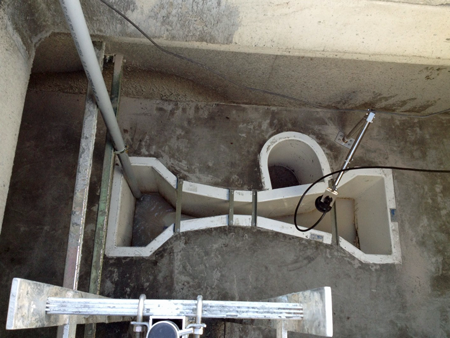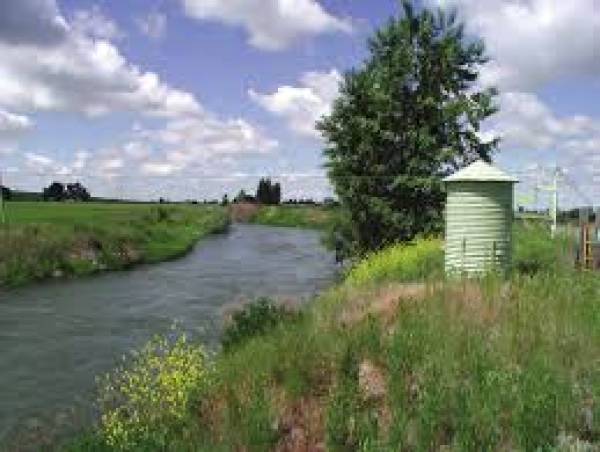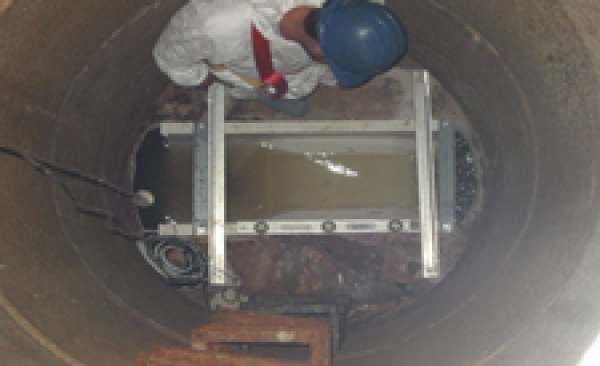This website uses a variety of cookies, which you consent to if you continue to use this site. You can read our Privacy Policy for
details about how these cookies are used, and to grant or withdraw your consent for certain types of cookies.
Why Not Use a Stilling Well on Sanitary Flows?
For many engineerings and end-users the default configuration for flume always includes a stilling well...and why not? When they work, they work great - providing a convenient area to measure the flow in a flume. When they don't work....well that's another matter.

What is a Stilling Well?
A stilling well is a round or rectangular chamber that is isolated from, but connect to, the main body of flow in a flume. The sole connection between the stilling well and the main body of flow is through a small connector through the sidewall of the flume.

Waves or surges experienced in the flume are dampened in the stilling well so that the level in the stilling well reflects only the actual rise / fall of the level in the flume due to changes in the flow rate.
Problems with Stilling Wells and Sanitary Flows
While on the surface this sounds good, the problem with using stiling wells on sanitary flows is two fold:
- The inlet to the stiling well throught the flume sidewall is small (2-inches [5.08 cnm] or less)
- The floor of the stiling well is depressed below the floor of the flume (generally 3-inches [7.62 cm] to 6-inches [15.24 cm]

For sanitary applications, the minimum recommended opening size for a flume is 3-inches (hence the reason the 3-inch Parshall is the minimum size recommended for sanitary flows). Since the standard stilling well connectioin is usually only 2-inches [5.08 cm] in diameter, there is a strong likelihood that the conenction will plug. The obviuous solution to this problem is increase the size of the opening...except for the fact that increasing the inlet size decreased the effectiveness of the stilling action in the well!
Even if the connection doesn't plug, solids will always deposit in the stilling well and cause a source of ongoing maintenance and potential source of error.
Summary
In the end, in applications were stilling wells are used to meaure sanitary flows, you can be assured that three things will happen:
- The inlet will clog
- The operators will need to perform regular / ongoing maintenance to keep the stilling well functioning (and probably curse you because of it)
- ...and the stilling well will be abandoned
Save yourself time, effort, and money....don't use stilling wells on santiary flows. It's better to fix the upstream hydraulics of an application than it to misapply the equipment only to end up abandoning it and still have the problem!
Related Blog Posts
Explore more insights in our blog.

LOCATIONS IN ATLANTA, GA & BOISE, ID




